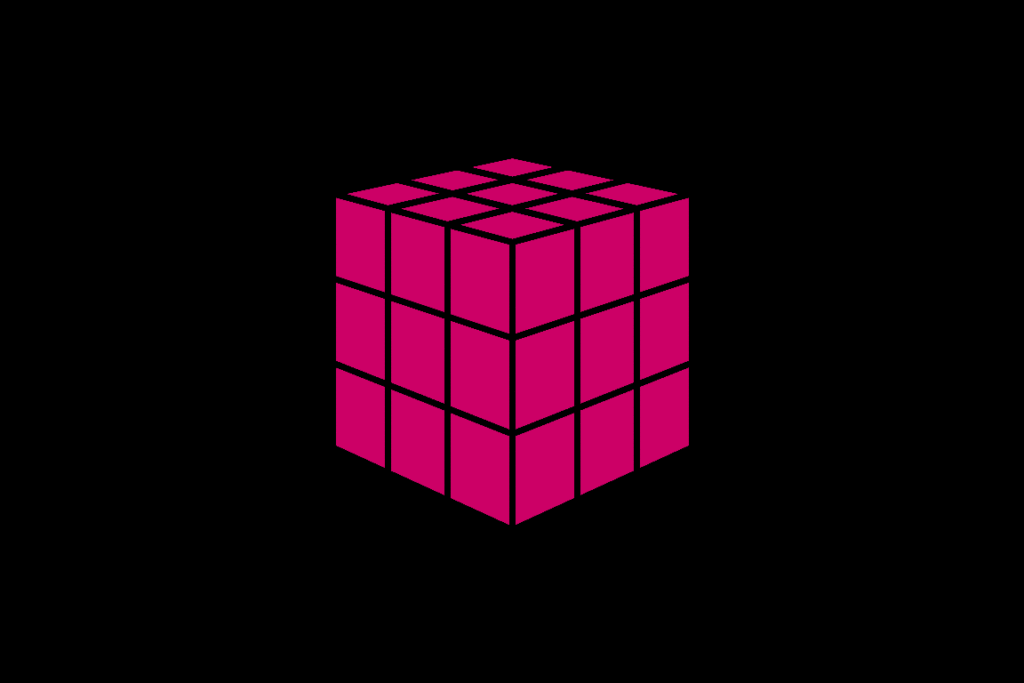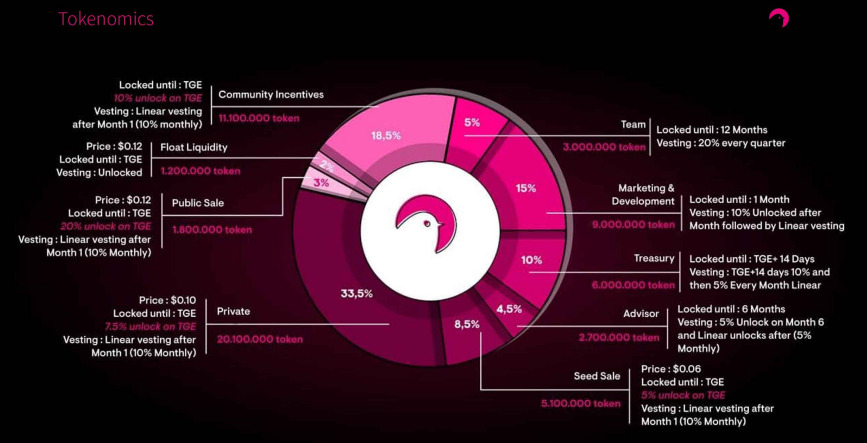Are you familiar with Polkadot? It’s no surprise that this innovative crypto project has been making waves since its inception, offering a remarkable solution to the long-standing challenge of scalability through parachains.
But have you heard of Kusama? Think of it as Polkadot on steroids. Launched in May 2019 as a parallel network, Kusama shares a similar code base and structure with Polkadot. However, there’s one key distinction that sets them apart: speed. Kusama enables developers to deploy new projects and updates at lightning-fast speeds, outpacing even its sibling network.
While some may view Kusama as nothing more than a testnet, overshadowed by Polkadot’s prominence, it’s a misconception that fails to grasp its true potential. In fact, Kusama is a thriving ecosystem in its own right, attracting numerous projects enticed by its rapid deployment capabilities and the diverse range of innovative ventures it incubates.

Source: Kusama Network
Introduction
Kusama is a canary network for Polkadot, representing an early release of the code that holds real economic value. It was founded in 2019 by Gavin Wood, founder of Polkadot and co-founder and former CTO of Ethereum. With its focus on providing a testing ground for developers, Kusama serves as a platform to experiment with runtime upgrades, on-chain governance, and parachains. It acts as a proving ground where developers can refine their innovations and gain valuable insights before deploying them on Polkadot.
Kusama’s uniqueness lies in its commitment to facilitating the rapid development of ambitious projects, making it a blockchain platform specifically designed for developers. As a canary network associated with Polkadot, Kusama derives its name from the concept of a “canary in a coal mine.” Traditionally, miners would bring canaries into mines, as these birds would sing in their cages but stop if there were any harmful gases present, alerting the miners to potential danger.
In the realm of blockchain, Kusama serves as a “canary network” without causing harm to any birds. It fulfills a similar purpose to that of a virtual replica of Polkadot, providing developers with a highly realistic testing environment for blockchain projects. Operating as an early code release, Kusama holds genuine economic value, enabling developers to test and refine their innovations before deploying them on Polkadot.
Kusama serves as a dedicated testing ground for runtime upgrades, on-chain governance, and parachains, offering developers a platform to experiment, iterate, and fine-tune their applications. Its distinguishing factor lies in the provision of a high-speed, scalable, and interoperable sharded network, offering features that are not yet available on Polkadot.
How Does Kusama Work?
Kusama, built by the same teams behind Polkadot (DOT) using the Substrate framework, operates as an interoperable blockchain platform that plays a crucial role in the Polkadot ecosystem. While sometimes referred to as a testnet, Kusama is more than just a mere testing ground for Polkadot projects—it is designed to closely replicate the architecture of Polkadot, making it an ideal platform for realistic experimentation.

Source: Kusama Network
In essence, Kusama serves as a catalyst for road-testing various innovations and staying ahead of the evolving Polkadot ecosystem to ensure its maximum success.
A Dual Blockchain Structure
Kusama implements a dual blockchain structure, consisting of a relay chain and parachains. The relay chain functions as the main Kusama blockchain, connecting all other blockchains and serving as the transaction hub. Its primary objective is to enhance the network’s scalability, allowing for efficient and seamless transactions.
On the other hand, parachains are independent blockchain networks that rely on the computing resources of the relay chain to verify transaction accuracy. By utilizing the relay chain, parachains contribute to the overall security and functionality of the Kusama network.
Nominated Proof-of-Stake System
The Kusama network operates on a nominated proof-of-stake consensus mechanism. This mechanism enables users who stake KSM coins on the network to participate as validators or nominators. Validators play a crucial role in verifying the data on the parachain blocks and have the authority to vote on network changes.
Nominators, on the other hand, are responsible for selecting validators and allocating their staked tokens and voting power to them. By staking KSM coins, users can actively propose network changes and vote on referendums, contributing to the evolution and improvement of the network.
Moreover, users who stake KSM coins have the opportunity to vote on network upgrades, with each vote being proportional to the amount of KSM crypto they have staked.
What is KSM?
Kusama (KSM) is the native token of the Kusama network. The Kusama token (KSM) holds significant value within the Kusama ecosystem, serving multiple crucial purposes. Let’s explore the various functions that make KSM an integral part of the network’s operation and innovation:
Staking: KSM tokens are staked to support the network’s security and consensus mechanism. By staking their tokens, participants actively contribute to the validation and finalization of transactions.
Governance: KSM holders play a vital role in the governance of the Kusama network. They have the power to vote on proposals, influencing key decisions related to network upgrades, funding allocation, and policy changes.
Bonding: KSM tokens are used for bonding when connecting external chains as parachains to the Kusama network. This bonding process ensures interoperability and collaboration between different chains, fostering a robust and interconnected ecosystem.
Testing Ground: Kusama functions as a fully-functioning blockchain that serves as a testing ground for projects before they are deployed on the Polkadot network. This unique feature allows developers to thoroughly test their innovations, ensuring a high level of readiness before integration with Polkadot.
Incentives for Long-Term Holding: Holding KSM tokens can bring additional benefits. Participants who hold and stake their KSM tokens for an extended period may receive rewards and incentives, encouraging long-term commitment to the Kusama ecosystem.
Market Trading: KSM tokens are actively traded on various cryptocurrency exchanges, allowing individuals to buy, sell, and trade based on market dynamics and personal investment strategies.
Tokenomics
KSM is Kusama’s native cryptocurrency and plays a vital role within the Kusama network. It shares similarities with DOT in terms of use cases and functionalities.
During the initial distribution, KSM followed a similar pattern to DOT. However, there is a distinction in the circulating supply between the two networks. Kusama has approximately 8 million KSM tokens in circulation. This difference is due to the redenomination of new DOT tokens, resulting in more DOT tokens in circulation but with a smaller value.
Kusama has an inflation rate of 10%, ensuring a steady increase in token supply. While the number of rewards generated by Kusama may be lower compared to DOT, the epochs for reward generation are accelerated by 4 times. This allows Kusama token holders to experience more frequent opportunities to earn rewards.

Source: Kusama Network
- 20% of the token supply is allocated to teams and marketing efforts.
- 4.5% of the token supply is reserved for advisors.
- 33.5% of the token supply is allocated for private sales.
- 37% of the token supply is dedicated to community incentives, promoting engagement and participation through rewards and seed sales.
- 3% of the token supply is allocated for public sale (IDO).
- The remaining 12% of the token supply is distributed for float liquidity and liquidity purposes.
Similarities between Polkadot and Kusama:
| Similarities | |
| Codebase | Both Polkadot and Kusama have identical codebases, with Kusama acting as a testing ground for new functionalities. |
| On-chain governance | Both networks have decentralized governance models, allowing token holders to participate in network-related decisions. |
Differences between Polkadot and Kusama:
| Differences | |
| Development focus | Kusama is primarily used for testing and developing new functionalities, while Polkadot focuses on production-ready applications. |
| Speed | Kusama is faster than Polkadot, enabling quick implementations and shorter governance events. |
| Stability and security | Polkadot offers a more secured, stable, and robust environment with structured upgrades and governance compared to Kusama. |
| Monetary policy | The supply of Polkadot’s native token (DOT) is uncapped and inflationary, while the supply of Kusama’s native token (KSM) is capped. |
| Use cases | Polkadot is suitable for enterprise-level applications, while Kusama serves as a testing ground for innovation and experimentation. |
| Vision | Polkadot aims to create a network for empowering individual blockchain creators, while Kusama focuses on simplifying interoperability. |
Pros of Kusama
| Pros | |
| Scalability | Kusama has the potential to scale infinitely and host several applications without network congestion. |
| Staking Rewards | Kusama (KSM) tokens can be staked in software wallets, allowing users to earn rewards. |
| Test Blockchain | The Kusama blockchain serves as a testing ground for projects deploying on Polkadot, enabling adjustments and refinements. |
| Decentralization | The Kusama project is community-driven, prioritizing decentralization and inclusive decision-making. |
Cons of Kusama
| Cons | |
| Limitations of Parachains | Deploying applications on the Kusama network requires an existing presence on another parachain, which can be challenging for developers and projects. |
Conclusion
Kusama (KSM) is a powerful and versatile governance token within the Kusama ecosystem. It serves multiple crucial purposes, including staking, governance participation, and bonding for chain connection. With its emphasis on rapid deployment and innovative experimentation, Kusama offers a vibrant environment for developers to refine their projects before deploying them on Polkadot. The unique features and advantages of Kusama position it as a thriving ecosystem with immense potential for blockchain innovation.
In summary, Kusama stands as a distinct network that complements Polkadot’s ecosystem. Its similarities in codebase and governance model provide a strong foundation, while its focus on speed and experimentation sets it apart. With thoughtful token allocation and a commitment to decentralized governance, Kusama is poised to play a significant role in shaping the future of blockchain technology.








